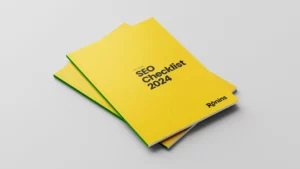
Website Development and Design Is Broken
Table of Contents
TLDR
In 2025, a website isn’t just a digital asset, it’s your top-performing growth tool. Yet most businesses still treat it like a brochure.
This article breaks down how modern website development and design is evolving across sectors like retail, healthcare, finance, and education, and what high performing businesses are doing differently:
- Strategy over structure: Start with outcomes, not page counts.
- Smart stacks: Headless CMS (Strapi, WordPress), React front-ends, AI-enhanced workflows.
- UX = ROI: Better flows mean higher conversions, retention, and trust.
- Future-ready builds: Personalisation, accessibility, sustainability, and performance baked in.
Bottom line? Stop building for launch. Start building for leverage.
• • •
• • •
Website Development and Design Is Broken, Here’s How Leaders Fix It

Why Your Website Isn’t Just a Build Anymore, It’s Your Hardest Working Growth Tool
Most websites are built to launch.
The smart ones are built to perform.
Yet even in 2025, too many businesses treat website development and design like a one-off project. Something to refresh every few years, tick off the roadmap, and leave to gather dust. But in reality? Your website is your top salesperson, your brand’s sharpest storyteller, and your single most powerful engine for growth.
First impressions? It owns them.
Lead generation? It drives it.
Trust? It earns it, or loses it in 3 seconds flat.
The way we build, structure, and scale digital platforms has changed. Web design isn’t just about aesthetics. Web development isn’t just about code. The best websites today are crafted for performance, personalisation, accessibility, and business outcomes, not just stakeholder sign-off.
In this article, we’ll explore how website development and design is evolving across industries, and how to rethink your approach if you want your next rebuild to deliver more than just a prettier homepage. We’ll share what leading companies are doing differently, where tech and UX are heading, and what mistakes still cost businesses the most.
And if you’re planning your next site? This might change what you prioritise entirely.
Let’s dig in.
• • •
The Modern Website’s Role in Business

For any growth minded company, your website isn’t a side project, it’s a primary asset. And in today’s landscape, effective website responsive design is directly tied to commercial outcomes.
It’s where most customers form their first impression. Not your logo. Not your social feed. Your site.
It’s also where nearly every core business function now converges:
- Lead generation — from organic discovery to demo requests.
- Customer service — with self-serve help centres and AI assistants.
- Recruitment — showcasing culture, roles, and EVP for top-tier talent.
- Product validation — acting as the go-to destination for comparisons and reviews.
And yet, too many websites are built and left untouched for years. We still hear, “We just need something live.” But in reality, a modern site needs to evolve continuously, especially as user expectations shift faster than most businesses can keep up.
Post-pandemic, this urgency only grew. A poorly performing site no longer gets a second chance. That’s why we’re seeing more brands adopt a three-to-five year redesign cycle, not for aesthetics, but to stay aligned with their product roadmap, performance goals, and changing tech landscape.
Take Montreaux Homes. Their original corporate site lumped three divisions into one flat structure. It looked serviceable, but it didn’t reflect the homes they were proud to build. We restructured the entire experience around what buyers needed most: searchability, visual storytelling, and clear booking pathways. The result? A site that didn’t just look better, it sold better.
The truth is, no business can afford to let their website under perform. Because every day it does, opportunity leaks, in traffic, leads, trust, and ultimately, revenue.
If your website feels like an online brochure instead of a business tool, it’s already behind.
• • •
The Strategic Shift: From Build to Leverage

It used to be enough to build a “good” website. Now, it has to work, commercially, technically, and emotionally.
That’s the shift we’re seeing across the most ambitious companies. Website development and design is no longer about ticking boxes on a features list. It’s about designing a system that delivers measurable outcomes: better conversions, higher retention, clearer messaging, and more scalable growth.
The old approach? Build it, launch it, move on.
The modern approach? Build it, learn from it, evolve it, continuously.
This is where strategy becomes the differentiator. Instead of starting with features or layout, smart teams start with objectives:
- What do we want this site to do for the business?
- What actions do we want visitors to take?
- What content or tools will move users from interest to intent?
That’s why discovery workshops, audience segmentation, user journey mapping, and data-informed decision-making now sit at the core of successful website projects. It’s no longer just about how your site looks. It’s about how well it performs.
One of the most overlooked levers? Modularity.
Modular, component-based websites allow for faster changes, better consistency, and a more agile content workflow. Rather than rebuilding pages from scratch, marketing teams can create with visual elements, new landing pages in hours using predefined, branded blocks, freeing dev teams to focus on new features, not formatting.
That’s exactly what we did for Orbus Software. Their previous CMS was a mess of one-off layouts and design inconsistencies. Every update required web developer help. We rebuilt the site using a fully componentised design system, giving their marketing team complete control, while ensuring every update stayed on the brands identity. The result? Faster workflows, lower cost of ownership, and a more cohesive user experience.
We also shifted the internal conversation. Instead of asking, “What should this page look like?”, we asked, “What’s the outcome we need from this interaction?” That one mindset change reframed how every decision was made.
If your site is built to launch, it will always need rebuilding.
But if it’s built to leverage, it can keep adapting, and performing, long after go-live.
• • •
Industry Trends: What Leaders Are Doing

Look closely at the fastest growing businesses across retail, healthcare, finance and education, and you’ll spot a shared pattern. They treat website development and design as a strategic growth engine, not just a cost of doing business.
It’s not about being flashy. It’s about being frictionless. And personal. And fast.
Let’s break it down sector by sector:
Retail: Seamless, Personal, Mobile-First
Retailers understand that a clunky experience kills conversion. In 2025, the benchmark isn’t “Can customers shop online?”, it’s “Can they do it in under 30 seconds on their phone while distracted?”
High-performing e-commerce sites now:
- Serve over 70% of their traffic via mobile devices
- Use AI to personalise product feeds, cross-sells, and promotions in real time
- Integrate AR previews for try-before-you-buy experiences
- Blend physical and digital via omnichannel design
Retailers like IKEA and L’Oréal use AR to visualise products in your space or on your face. Smaller brands do it too, using off-the-shelf plugins paired with lightning-fast performance. It’s not about innovation theatre; it’s about removing doubt and closing the sale.
Behind the curtain, they’re investing in headless commerce, faster checkouts, and performance optimisation that shaves off every unnecessary second. Because in this space, milliseconds cost millions.
Healthcare: Accessible, Secure, Human-Centred
Post-pandemic, healthcare websites are no longer informational. They’re operational. They book appointments. Deliver results. Offer live triage. In some cases, they save lives.
Leading healthcare sites now:
- Integrate securely with EHR (Electronic Health Record) systems
- Offer video consultations and AI-powered symptom checkers
- Meet or exceed WCAG 2.2 web content accessibility guidelines§
- Prioritise encryption, multi-factor login, and trust signals at every step
The best don’t just meet compliance, they design for comfort. Fonts are readable. Content is plain English. Interfaces are calm and familiar. Because when a parent is Googling symptoms at 2am, usability becomes urgent.
Finance: Secure, Responsive, Real-Time
Banks, fintechs and insurers have evolved from brochureware to dynamic portals. Today’s best financial websites:
- Let users manage everything from dashboards, not branches
- Offer AI budgeting, fraud alerts, and Open Banking integrations
- Rely on real-time APIs and biometric logins for seamless UX
- Build trust through transparency: clear confirmations, cookie policies, and data control
Security isn’t hidden. It’s designed in. When a user hits “transfer,” they want visual confirmation, clear next steps, and fast feedback. Trust isn’t just legal, it’s UX.
Education: Learner-Centric and Modular
Universities and schools are rethinking their websites as platforms, not pamphlets. With online learning now mainstream, education sites must:
- Serve students, parents, and faculty with tailored experiences
- Integrate LMS platforms and mobile-accessible dashboards
- Use clear navigation, searchable content, and visual storytelling
- Meet strict accessibility standards across all devices
Virtual open days, course finders, campus tours, they’re not just bells and whistles. They’re conversion tools. And they work.
Some institutions are even experimenting with AI chatbots that support coursework queries or admissions FAQs, always on, always accurate.
What These Leaders Share
Across all sectors, the trend is clear:
High-performing websites are designed around the user’s intent, not the business structure.
They load fast. They speak clearly. They guide, don’t confuse. And they’re built with systems that can adapt, because next year’s roadmap will demand more.
If you’re still building static sites, linear journeys, or one-size-fits-all templates, you’re not just behind on a well designed website, you’re behind on customer expectations.
• • •
The Development Challenges

If the strategy defines what your website needs to do, the tech stack defines how reliably, scalably and cost-effectively it can do it.
And right now, too many businesses are using the wrong tools for the job, either because “we’ve always used WordPress,” or because someone over-engineered a stack that nobody in marketing can touch without raising a ticket.
Modern website development and design isn’t about chasing shiny frameworks. It’s about matching the tech to the business model, and building in flexibility for what comes next.
Here’s what high-performing platforms have in common:
Modular CMS, Not Monolithic Pages
Traditional CMS platforms worked well when content needs were simple. But with multiple channels, teams, and languages, brands need systems that are faster to edit and easier to extend. That’s where headless CMS platforms come in.
Unlike traditional CMS (which ties content tightly to design), headless setups separate the content from the front end. That means:
- Content editors update once and push everywhere (web, app, even in-store screens)
- Developers have total freedom to build fast, custom front-ends
- The business gets scalability, security, and speed
Two standout options:
- WordPress as headless, for brands who need familiarity but want modern architecture
- Strapi, an open-source CMS that plays beautifully with React, Vue or static site generators — perfect for dev-led teams building fast, structured content systems
At Ronins, we’ve used both, and the choice depends on internal maturity, budget, and content ownership. For lean startups, Strapi gives you speed. For editorial teams, WordPress + GraphQL unlocks rich, multichannel publishing.
Modern Front-End Frameworks
React.js continues to dominate the UK agency landscape , and for good reason. Component-based design, reusable logic, and a vast ecosystem make it ideal for scalable builds.
We’re also seeing:
- Vue.js in use where lightweight builds matter (mid-sized apps)
- Next.js and Nuxt for server-side rendering and that search engine optimisation edge
- Jamstack for lightning-fast brochure or content-driven sites (often paired with headless CMS and a CDN)
The benefit? Performance, flexibility, and freedom. You build once, deploy everywhere, and your site can scale without rework.
AI Enhanced Testing and User Testing
AI tools like GitHub Copilot and ChatGPT are streamlining builds. They’re not replacing developers, but they’re accelerating boilerplate, automating tests, and surfacing UX improvements faster.
We now use AI to:
- Suggest test coverage
- Spot inefficiencies in code
- Draft initial UX wireframes based on feature inputs
It means our dev team can focus more on architecture and experience, not grunt work.
Bottom line?
The best tech stack isn’t the flashiest. It’s the one that lets your team ship fast, iterate confidently, and scale without rewriting everything in 18 months.
• • •
What Founders and CMOs Get Wrong

Let’s be honest, most website problems don’t start in design or development.
They start in the boardroom.
Too many leaders approach website development and design like a branding exercise or a tech procurement project. But that mindset almost guarantees waste, delays, and disappointing ROI.
Here are five of the most common traps:
1. Skipping Discovery (User Research)
“We know our users.”
No, you know some of them. And their needs have changed. Discovery isn’t a checkbox. It’s where you uncover friction, test assumptions, and define the real outcomes your site needs to deliver.
Without it, you’re building blind.
2. Over-indexing on Looks, Not Function
It’s easy to fall for a glossy prototype. But if the user flow breaks, or your messaging lands flat, no amount of parallax scroll will save it.
Great design isn’t about aesthetics. It’s about clarity. Confidence. Conversion.
3. Treating Content Like a To-Do List
Content is usually the last thing anyone wants to deal with, until it’s launch week and nothing’s written. But messaging is what sells. If your copy doesn’t speak to pain points, objections, and urgency, you’re leaving money on the table.
Strong content isn’t decoration. It’s your best salesperson.
4. Overbuilding for Edge Cases
If your MVP is already bloated with complex integrations “just in case,” you’ve lost focus. Build what proves value. Test it. Then expand.
At Ronins, we’ve walked away from projects where the spec was a wishlist, not a strategy. Because chasing every stakeholder request leads to brittle, unusable sites.
5. Assuming It’s Done at Launch
Your site should improve after it goes live. That’s when real data comes in. Bounce rates. Drop-offs. High-performing pages.
If you’re not budgeted for ongoing optimisation, CRO, and performance tuning, you’re only half-invested in its success.
A Story from the Field
When a major food retailer approached us, they’d already sunk time and money into two different codebases. Everyone wanted to patch what they had. But we pushed for a full rebuild. It wasn’t the popular choice, but it was the right one. That decision turned a 1-star app into a 5-star experience.
Sometimes clarity means saying: “Let’s start again, properly.”
• • •
The ROI of UX: Conversion, Retention, and Trust

User experience isn’t a “nice to have.” It’s the difference between growth and churn. Between being remembered, or forgotten.
And yet, UX is often misunderstood as “how it looks.” In reality, great UX is how your product works when no one’s watching. It’s the quiet clarity that lets users flow through your site without friction or confusion.
That clarity is what drives user engagement and performance.
Conversion
Every drop-off is a data point. Every delay, a lost lead.
Smart UX design reduces bounce rates, shortens decision time, and increases the percentage of users who take action, whether that’s buying, booking, subscribing or enquiring.
At Catch, our UX overhaul focused on surfacing the right features at the right time. We restructured navigation, simplified the flow, and embedded smart defaults across the app. The result? A 50% increase in subscriptions and a 32% jump in traffic , all without paid media boosts.
Those aren’t design wins. They’re revenue wins.
Retention
UX doesn’t stop after the first click.
It’s what brings users back, or pushes them away for good.
A streamlined dashboard. Clear onboarding. Context-aware help. These are the differences between a one-time visit and habitual engagement that should not negatively affect user experience.
That’s why we build with real user scenarios in mind. Not “ideal journeys” on a whiteboard, but real people with limited time, bad lighting, or a toddler on their hip.
Trust
- Trust is built through interaction, not slogans.
- When a user clicks “submit” and nothing happens? Trust drops.
- When a site is slow, broken or inaccessible on mobile? Trust drops as do search engine rankings.
- When your content contradicts your CTA? Trust drops.
That’s why micro UX matters. Conducting user testing cross Load speed, field labels, error messaging, mobile responsiveness, broken links and a websites performance, they’re not edge cases. They’re the main event.
It’s also why we push clients to consider accessibility and inclusive design early. Not because it’s nice, but because it builds equity. It widens reach. It signals professionalism.
If your site isn’t converting, retaining or reassuring, it’s not just a poor user experience.
It’s a business one.
• • •
Looking Forward: What’s Next in Website Development

If the last five years were about digital catch-up, the next five are about competitive advantage.
Website development and design is no longer playing catch-up with consumer expectations, it’s shaping them. And the businesses winning attention, trust and market share? They’re building for what’s next.
Here’s where the leading edge is headed:
Privacy-First User Experience
With third-party cookies disappearing and privacy expectations rising, users now expect transparency by default. Sites that offer simple, granular consent and clear data policies don’t just comply, they convert better.
Expect to see:
- Server-side tagging replacing web browser-based trackers
- Personalisation driven by first-party data and context, not surveillance
- Consent centres becoming part of UX, not a popup
This isn’t a legal checkbox. It’s a design opportunity to build trust at the first click.
Sustainable Web Design
Page bloat is out. Performance and energy efficiency are in.
As digital carbon footprints become measurable (and visible), brands are starting to prioritise greener choices:
- CDN-delivered assets
- Compressed images and font files
- Lower-emission hosting partners
- Minimalist interfaces that load fast and waste less
It’s not just a trend, it’s increasingly part of procurement criteria. Especially in public sector and ESG-focused organisations.
Inclusive, Neuro-Friendly UX
Accessibility is no longer just WCAG checklists. Inclusive design now means:
- Clear, calm layouts
- Customisable experiences (dark mode, text size, motion control)
- Reduced cognitive load for neurodiverse users
- Simple, jargon-free content for real-world readability
Expect to see a shift from compliance to compassion, and from risk-avoidance to reach expansion.
Real-Time, AI-Enhanced Interfaces
AI isn’t just writing content or generating code. It’s optimising interfaces in real time:
- Personalised content or product suggestions
- Predictive search
- Smart form completion and inline guidance
- Conversational UIs replacing rigid menus
The smartest sites in 2025 and 2026 won’t be static, they’ll adapt to the user in the moment, just like a great salesperson would.
If your website is still a fixed experience for all users, you’re already behind.
The next wave is personalised, ethical, efficient and inclusive.
And it’s already here.
• • •
Conclusion: Build Less. Impact More.

The best websites in 2025 don’t try to do everything.
They do the right things, faster, clearer, and with purpose.
Because website development and design is no longer about building pages. It’s about engineering outcomes:
- More leads.
- Shorter journeys.
- Higher trust.
- Lower drop-offs.
- Faster time-to-value.
And that starts with asking better questions.
- Not “What do we need to say?”
- But “What does the user need to do?”
- Not “How many pages should we build?”
- But “Where are we trying to take people, and what’s blocking them now?”
This is the shift we’re helping clients make every day at Ronins. From one-off builds to ongoing performance platforms. From pixel polish to conversion clarity. From tactical fixes to strategic growth.
If your website is underperforming, overcomplicated, or no longer aligned to your commercial direction, now is the time to reset.
Let’s make it a growth engine again.
Thinking of rebuilding or replatforming?
We run focused Website Reset Workshops, designed to help founders, CMOs and digital leads clarify what to build (and what to drop) before you commit to the wrong spec, stack or structure.
- It’s not about adding more.
- It’s about finding the few things that change everything.
• • •
External Citations for “Website Development and Design” Article
- 75% of users judge a company’s credibility based on website designSource: Stanford Web Credibility Research, via SWEOR and Blue Corona: https://www.sweor.com/firstimpressions
- Users form first impressions of a website in under 0.05 secondsSource: Behaviour & Information Technology Journal (Lindgaard et al.): https://doi.org/10.1080/01449290500330448
- Mobile accounts for over 70% of retail web trafficSource: Statista, 2024 UK retail mobile vs desktop usage: https://www.statista.com/statistics/277125/share-of-website-traffic-coming-from-mobile-devices/
- Cart abandonment rates average around 70–76%Source: Baymard Institute – Cart Abandonment Statistics: https://baymard.com/lists/cart-abandonment-rate
- Open Banking adoption in the UK exceeds 10 million usersSource: Open Banking Implementation Entity (OBIE), UK: https://www.openbanking.org.uk/about-us/latest-news/open-banking-milestone-10-million-users/
- 76% of global developers use AI coding toolsSource: GitHub Octoverse 2023 Report: https://octoverse.github.com/2023/
- The average web page emits 0.33–0.37g CO₂ per pageviewSource: HTTP Archive, 2024 Web Almanac: https://almanac.httparchive.org/en/2024/page-weight
- Web accessibility failures remain widespread (76% fail basic focus visibility)Source: UK Government Accessibility Monitoring Report (2024): https://www.gov.uk/government/publications/accessibility-monitoring-of-public-sector-websites-and-mobile-apps-2024
- Digital sustainability is now part of EU-wide regulatory focusSource: European Commission – Corporate Sustainability Reporting Directive (CSRD): https://finance.ec.europa.eu/capital-markets-union-and-financial-markets/company-reporting-and-auditing/company-reporting/corporate-sustainability-reporting_en





